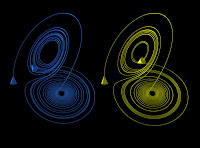"We all are of the citizens of the Sky" Camille Flammarion
In 1858, by the set of its relations, it will allow Camille Flammarion, the 16 years age, to enter as raises astronomer at the Observatory of Paris under the orders of Urbain the Glassmaker, at the office of calculations.
I was over at Cosmic Variance for a visit, and commented on the "woodcut" which is title by the name of the post above given by Camile Flammarion? Below a caption is produced with a
While Daniel ask spyder what the source of this was, I am quietly doing my own research, because I have used this image myself. What did it mean?
This picture is a copy of a "16 century woodcut" copied by Camille Flammarion in 1888.
The Flammarion woodcut. Flammarion's caption translates to "A medieval missionary tells that he has found the point where heaven and Earth meet..."
The widely circulated woodcut of a man poking his head through the firmament of a flat Earth to view the mechanics of the spheres, executed in the style of the 16th century cannot be traced to an earlier source than Camille Flammarion's L'Atmosphère: Météorologie Populaire (Paris, 1888, p. 163) [38]. The woodcut illustrates the statement in the text that a medieval missionary claimed that "he reached the horizon where the Earth and the heavens met", an anecdote that may be traced back to Voltaire, but not to any known medieval source. In its original form, the woodcut included a decorative border that places it in the 19th century; in later publications, some claiming that the woodcut did, in fact, date to the 16th century, the border was removed. Flammarion, according to anecdotal evidence, had commissioned the woodcut himself. In any case, no source of the image earlier than Flammarion's book is known.See here for larger version "with caption" that has been translated above.
Now the interesting thing about woodcuts and what was found in my research, had to do with how "alchemical texts" can embody the "psychological process" that lent itself to the display the evolution in humanities thoughts.
Splendor Solis ("The Splendour of the Sun") is a well-known colorful alchemical manuscript. The earliest version, written in Middle German, is dated 1532-1535 and is housed at the Prussian State Museum in Berlin. It is illuminated on vellum, with decorative borders like a book of hours, beautifully painted and heightened with gold. The later copies in London, Kassel, Paris and Nuremberg are equally fine. In all twenty copies exist worldwide.
I will give an examples that have been retained by me, for understanding that allow me to speak on this. While I referred to the "enlightenment" and gave this answer above, I used it in context of how we see the cosmos now, given the understanding of the physics we are engaged in science.
While relativity was applied to the cosmos at large, now, quantumly defining the nature of this cosmos, is part of this achievement that I refer too in terms of enlightenment.
What are Woodcuts
In Europe, Woodcut is the oldest technique used for old master prints, developing about 1400, by using on paper existing techniques for printing on cloth. The explosion of sales of cheap woodcuts in the middle of the century led to a fall in standards, and many popular prints were very crude. The development of hatching followed on rather later than in engraving. Michael Wolgemut was significant in making German woodcut more sophisticated from about 1475, and Erhard Reuwich was the first to use cross-hatching (far harder to do than in engraving or etching). Both of these produced mainly book-illustrations, as did various Italian artists who were also raising standards there at the same period. At the end of the century Albrecht Dürer brought the Western woodcut to a level that has never been surpassed, and greatly increased the status of the single-leaf (ie an image sold separately) woodcut.
As woodcut can be easily printed together with movable type, because both are relief-printed, it was the main medium for book illustrations until the late-sixteenth century. The first woodcut book illustration dates to about 1461, only a few years after the beginning of printing with movable type, printed by Albrecht Pfister in Bamberg. Woodcut was used less often for individual ("single-leaf") fine-art prints from about 1550 until the late nineteenth-century, when interest revived. It continued to be important for popular prints until the nineteenth century in most of Europe, and later in some places
I refer to the psychological basis of what these woodcuts can mean from an early historical perspective. By studing methods used I came to learn of what this could mean "not from producing gold from lead" but of what this could mean in terms of applying ourselves and conducting our selves, as a commitment to being better human beings.
This new compound of thought is difficult to understand and apply in our everyday affairs. The Swiss psychiatrist C. G. Jung went perhaps further than any other researcher to extract the psychological wisdom embedded in alchemy and make it available to the modern world. Through his work we learn how alchemy can be used as a powerful means of psychological transformation, personal empowerment and spiritual adventure. Individuation is the real gold sought by true alchemists. Yet, for all his genius, Jung's writings are complex and oftentimes as difficult to read as the alchemical literature. A thorough knowledge of analytic psychology, theology, symbolism and mythology is required to appreciate the depth of Jung's insights. Adding to this challenge is the rapid rate that science and technology have advanced since Jung's death. We live in a New World. Especially with the findings of quantum physics -many of which validate old philosophical truths- the time is ripe for a fresh interpretation of alchemy and how we can apply its powerful recipes to the challenges of contemporary life.



